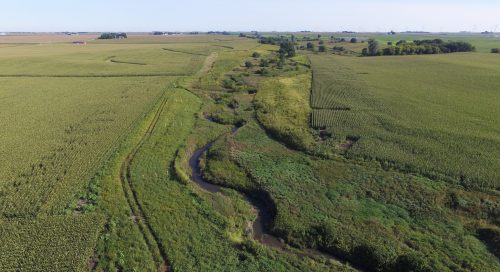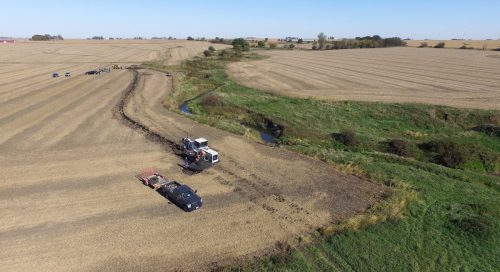Data collector, coalition builder, public speaker, grant writer – those are among the many hats watershed leaders often find themselves wearing to achieve watershed management goals. Whether as a professional watershed coordinator or volunteer leader, success in these roles requires a mastery of skills no single degree can teach.
So, if you had to pick a few, what are the most critical skills to invest in to become an effective watershed leader?
A handful of recent studies by extension specialists* generally agree on a set of “core competencies” for watershed leaders, a collection of knowledge, skills, and behaviors that make the biggest difference in their work and success. Interestingly, the competencies that rose to the top in their interviews and surveys of watershed coordinators are not the technical skills so often learned in formal schooling, but social skills most often learned through the school of life.
Here we break down five of those core competencies with the help of two people who have been deeply involved in the theory and practice of watershed leadership training: Jamie Benning of the Iowa Watershed Academy and Joe Bonnell, who formerly ran the Ohio Watershed Academy.
Partnership building and collaboration
Teamwork makes the dream work, so they say. Collaboration has repeatedly rated high as a core competency, which is perhaps to no surprise, since watershed management is an inherently collaborative pursuit that touches the interests and lives of a diversity of people.
This competency involves the ability to build solid partnerships, to know who to include and how to include them, and to work together in a way that honors all voices. Moreover, collaboration can also mean knowing how to identify and leverage overlapping interests, sometimes beyond the usual suspects.
For example, Jamie Benning explained how some watershed coordinators in Iowa have put in the extra frontend work to build partnerships with wildlife groups, such as Pheasants Forever. This has opened up new doors, particularly to win-win opportunities in funding for projects that protect grassland and wetland habitats and reduce nutrient loss.
“It’s thinking about how we can leverage resources and accomplish bigger goals or get to our goals faster by collaborating,” said Benning.
Communication skills
Hand-in-hand with collaboration lies communication skills, of both the interpersonal and external varieties. According to Joe Bonnell, the former is about the art of building trust and maintaining it, which is critical for any strong relationship.
“Communication is a way to let people know that you understand they’re important, and that their understanding of what you’re doing is important,” said Bonnell, who is now a natural resource educator at the University of Wisconsin-Madison Division of Extension.
Bonnell says another critical knack for effective communication is being able to translate complex, often technical ideas into accessible language in ways that lead to not only understanding but also impact.
The marketing 101 basics of knowing your audience and tailoring your messages also come into play, regardless of whether your communication is interpersonal or public facing. These basics are particularly helpful in public speaking and media relations, both skills that students of the Iowa Watershed Academy have consistently valued getting training in, Benning has found.
“Coordinators are very interested in being outdoors and working one-on-one with farmers and landowners, so doing interviews with a newspaper or radio station is outside of the comfort zone for many of them,” she said.
Facilitative leadership
Leadership in watershed management is less about having all the ideas and more about letting others have the ideas and supporting their pursuit of them.
“It’s having the skills to bring the group together, think about your goals, and then find out where those align with already existing resources in the community and watershed,” said Benning, who thinks such leadership capacities are especially applicable for all types of watershed leaders, whether a professional coordinator or a volunteer farmer leader.
Key to facilitative leadership is also good group and meeting facilitation skills, from putting together an effective agenda to being able to read a group and adapt to the unexpected.
“It’s not the kind of thing you typically get in a college class, but it makes a huge difference when you learn how to do it well,” said Bonnell, who explained their module on running effective meetings when he was at the Ohio Watershed Academy was the only one they never changed because of its popularity among their participants.
Project Management
To be an effective watershed professional, you gotta be organized. Period. You are juggling lots of moving parts (and people), and coming up with whatever organizational system works for you is essential to keeping it all together.
“You need to learn how to keep track of stuff and be accountable,” said Bonnell.
Building your confidence to keep track of expenses, receipts, outputs, and outcomes is crucial for reporting progress to funders and stakeholders, which Bonnell says can be particularly important with complex, big-money, “high stakes” projects, such as stream restorations.
Of course, project management is really a cluster of skills. Benning thinks goal setting is another critical element of being an effective project manager, and tools like SMART goals and logic models are handy ways to ensure milestones are clear and reachable.
Vision
Goal setting blends into our last core competency: vision. Also a multidimensional skill, vision involves strategic planning, thinking creatively and systematically, and understanding the many sides of watershed challenges.
One could argue it also entails something that Benning thinks can be underappreciated in watershed management: dedication.
“Something you start to realize of successful coordinators is that drive to see this work happen,” said Benning. “It’s hard work. There is a lot asked of a watershed coordinator or conservation professional. They have to come with that desire and heart for this work.”
—
Perhaps you’re now wondering, well how can I develop these skills? While experience can be a great teacher, watershed leaders may be able to get training to support their core competency development.
“I do think that a lot of these skills can be learned,” said Bonnell. “In a lot of cases, a little bit of skill goes a long way.”
If you live in a state with a watershed academy – such as Iowa, Minnesota, Ohio, Michigan, Nebraska, or Indiana – these programs are designed to equip watershed leaders with the core competencies.
For those in states without a watershed academy, Bonnell recommends looking into leadership, nonprofit management, or community development programs or trainings at nearby institutions. Benning’s advice is to connect with or shadow a seasoned watershed professional who has been in similar shoes.
If you are a watershed professional or volunteer leader, what competency or skill have you found to be most essential for achieving your goals? Tell us in the comments!
*And here are those studies I mentioned:
- Core Competencies for Successful Watershed Management Practitioners
- Developing Capacity for Local Watershed Management: Essential Leadership Skills and Training Approaches
- Core Competencies for Watershed and Lake/Stream Leaders
- Social Indicators for Watershed Leadership
*Header photo by U.S. Fish and Wildlife Service Midwest Region



